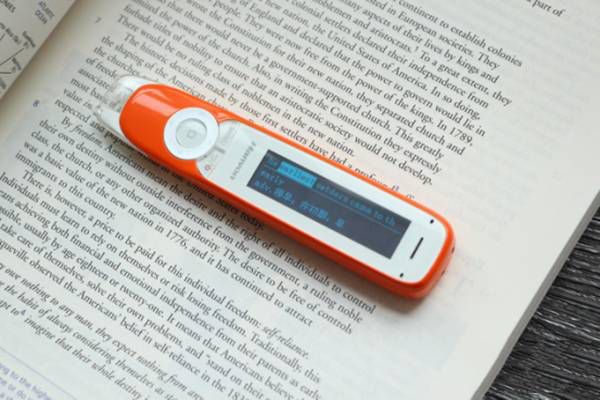高中英语阅读理解拓展之玻璃回收
高中英语阅读理解仅凭书本内容很难有大的进步,必须结合时事,进行大量的课外阅读,培养读感,才能在英语卷面上拿到超出你本身词汇量的得分,下面是小编整理的关于高中英语阅读理解拓展之玻璃回收的资料,非常适合用来反复阅读,希望对你有所帮助!

Glass Recycling
Glass has the least volatile pricing of all the post consumer recycling commodities. Composed of sand and potash; bottle glass is made from readily available and inexpensive raw materials. To be competitive, recycled glass must maintain a price that competes with these abundant raw materials. Traded as flint (clear), amber (brown), emerald (green) or mixed color broken glass.
The price depends on the cleanliness and color of the recycled product. Clean flint cullet (another word for broken glass) is usually the most desirable form of recycled glass scrap. Mixed color broken glass with ceramics or stones mixed in it is the least desirable grade of cullet bringing the lowest price. Most Recyclers color sort and break or crush and screen bottles before selling their product.
Modern, high production bottle manufacturing requires very clean and uniform feedstock. Over the past decade there has been a growth in the glass benefaction sector. These are intermediate processors that receive glass from recycling programs and run it through a series of steps to remove any contaminants (rocks, ceramics, metal caps, etc.) and provide a uniform feedstock to the bottle manufacturers. These preprocessor provide an excellent market for recycling programs that do not have the volume or ability to produce glass for direct mill delivery.
Glass beneficiation plants use sophisticated optical sorting machines to separate the glass into the three color types. They may also x-ray the glass to detect any rocks or ceramics which are then removed. Magnets and eddy current separators are used to removed magnetic and non-magnetic metal contamination from caps and lids. The end product is a uniformly sized load of ground glass that is free of contaminants readily acceptable by bottle manufacturers.
Lower grades of recycled glass that are too mixed or contaminated, may be used in concrete or in road paving material called "Glass halt". In some areas where there is an overabundance of low grade glass it is used to cover over the rubbish in the land fill in place of sand. This is not truly recycling and it is hoped that better sorting technology will soon make this material usable for new bottles.
Glass recycling saves energy because recycled glass can be processed at a lower temperature than blending new glass from raw materials. Also, recycled glass is usually closer to the bottle plants than the sources of potash, the most expensive component in glass bottles and jars. Bout 32% of energy can be saved because of its low melting point.
It is easier to manufacture new glassware from recycled glass than from raw material, which can also reduce air pollution by 20%, and water pollution by 50%.
玻璃回收
在所有消费后回收商品中,玻璃的价格波动最小。由沙子和钾盐组成;玻璃瓶是用现成的廉价原料制成的。为了具有竞争力,再生玻璃必须保持与这些丰富的原材料竞争的价格。以燧石(透明)、琥珀(棕色)、祖母绿(绿色)或混合色碎玻璃交易。
价格取决于回收产品的清洁度和颜色。干净的燧石碎玻璃(碎玻璃的另一个词)通常是回收玻璃废料最理想的形式。混色碎玻璃中掺入陶瓷或石头是价格最低的碎玻璃中最不理想的等级。大多数回收商在出售他们的产品之前对瓶子进行颜色分类、破碎或压碎、筛选。
现代,高产量的瓶子制造需要非常干净和均匀的原料。在过去的十年里,玻璃捐赠行业有了增长。这些中间处理器接收回收程序中的玻璃,并通过一系列步骤去除污染物(岩石、陶瓷、金属盖等),为瓶子制造商提供统一的原料。这些预处理器提供了一个很好的市场,为回收计划,没有数量或能力生产玻璃直接工厂交货。
玻璃选矿厂使用先进的光学分选机将玻璃分为三种颜色。他们还可以对玻璃进行x光检查,以检测任何岩石或陶瓷,然后将其移除。磁铁和涡流分离器用于去除盖子和盖子上的磁性和非磁性金属污染物。最终产品是尺寸均匀的毛玻璃,不含瓶子制造商容易接受的污染物。
较低等级的再生玻璃,太混合或污染,可用于混凝土或道路铺路材料称为“玻璃”。在一些地方有一个过剩的低等级玻璃,它是用来覆盖在土地上的垃圾填充沙的地方。这不是真正的回收,希望更好的分类技术将很快使这种材料可用于新的瓶子。
玻璃回收可以节约能源,因为回收的玻璃可以在较低的温度下加工,而不是从原材料中混合新玻璃。此外,回收的玻璃通常比钾盐更接近瓶装厂,钾盐是玻璃瓶和罐子中最昂贵的成分。由于其熔点低,可节省约32%的能源。
用再生玻璃制造新的玻璃器皿比用原材料制造新的玻璃器皿容易得多,还可以减少20%的空气污染和50%的水污染。


















